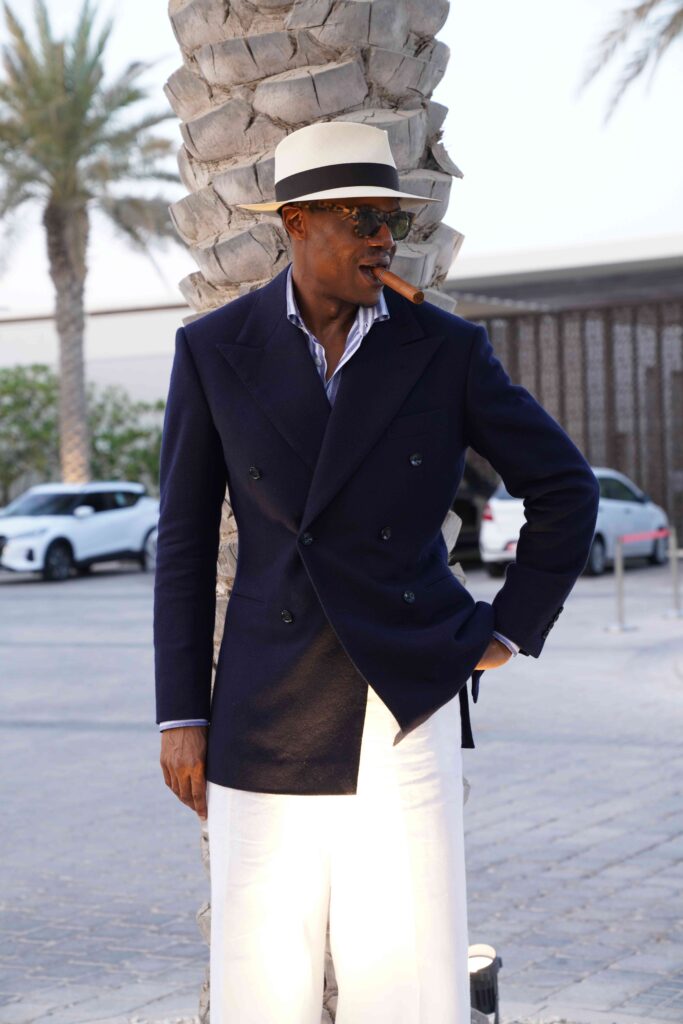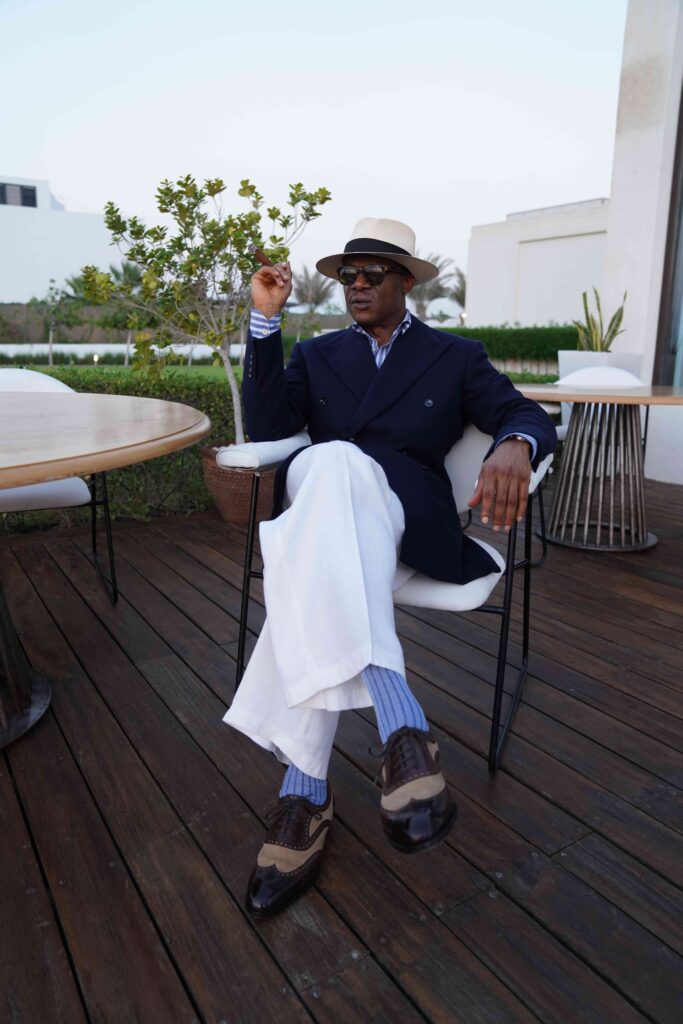The blue blazer has been a staple of classic menswear for about a century, pulled out of the closet when a suit is too formal and a sports jacket a little too cheerful. Tailors and RTW houses sometimes try to inject variety with new fabrics and colour options (light navy, French navy, super dark navy), but double or single-breasted, the blazer is always blue.

Over the years, attempts have been made to flout the rule that blazers should always be navy, and always be dull. Maroon, dark green, purple and other colours have come and gone, likely to reappear in the line-ups of chain stores again but never to replace their blue cousin.
Does anyone still wear them? Yes, a lot, if advertisements, online catalogues and the contents of high-street shops are any indication. So, clearly, there is a place for the blue blazer.
But, and this is the kicker, what can you do with it? If it has to be navy, is there any way that it can be enlivened and transformed into something that shouts “look at me”, assuming that you want to do that? It is not that the blazer needs a face-lift, but it does need some attention.
First, design. Take the opportunity to make your blazer stand out by opting for a double-breasted, six-by-two or four-by-one. If you are vertically challenged, the double-breasted blazer will make you look taller – not NBA player tall, but well over five and a half feet. And the double-breasted does look very well with brass buttons (if you can actually find them – another story). With the double-breasted you can even show off six of them, enabling you to light up a room or at least reflect what light there is.
Second, cut: Ask for a drape-cut chest. Not so easy, depending on your tailor, and not likely to be available in shops, but worth sourcing (if you are reading this post, you already know). The drape chest will give you that V-shaped torso and narrow waist, after which we all search, too often in vain.

Third, the trimmings: Consider patch pockets, for a more casual look. Patch pockets can be flapped or plain and add an interesting touch to the outline of the jacket.
Fourth, fabric and weight: There are a great many options here. For the summer, a light hopsack or mohair blend. For the fall and winter, flannel or serge in 13 or 14 oz. Mohair has a slight shine to it, but hopsack and flannel are plain fabrics, with an extra bit of texture.
Fifth, accessories: put the white shirt away and think of pencil or block stripes (blue or maroon), possibly a light check (e.g., dark on light blue). This will give your companions something to look at, and will break up your front. If you are going to wear a tie, check the colour wheel and pick something contrasting (burgundy, grey houndstooth (formal) or possibly purple). Remember, as the Proff says, avoid a striped tie with a striped shirt, so paisley, solid or some other pattern will work. If you are not going to wear a tie, a cooper or camp collar will sit well over your jacket collar.

Sixth, trousers: To wreck all the effort you have made on cut, fabric and accessories, just wear a pair of old trousers from your cupboard – for example, those grey trousers that hug your legs. All wrong for a well-designed and expertly tailored blazer. You need trousers that hang, as opposed to clinging to you. They need to hang straight, continuing the line from your shoulders through your waist. Consider a pair of grey or fawn flannels. For casual, tieless occasions, cotton trousers work, white if you are going to wear the blazer during the day. Just make sure that they hang.
Seventh, shoes: no running shoes, but deck shoes or white bucks will work. Try a pair of dark brown loafers for a refined look
So now you have it. The blazer is an asset, not the dull relative of your sports jackets. It is still blue, but no longer dull. For a blazer that kills, try a double-breasted, drape-cut, patch pocketed number from AskOkey..
I really appreciate this post. I have been looking all over for this! Thank goodness I found it on Bing. You have made my day! Thx again!
Thank you for your support!